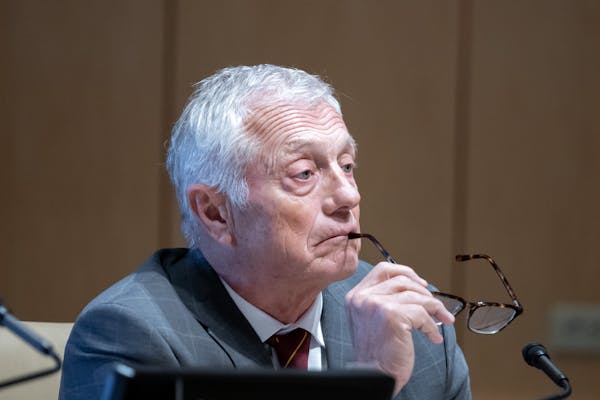MORRIS, Minn. — The gathering in the student center of the University of Minnesota Morris would have been easy to miss.
A small group of students met with eight U regents Monday afternoon, chatting as they ate soup and salads. Occasionally, a few words broke through the quiet rumble of conversation: "Sviggum" and "sorry."
It's been one month since Regent Steve Sviggum asked if it was possible the campus had become "too diverse" from "a marketing standpoint" — remarks that drew a swift rebuke from students, faculty and some fellow regents. Sviggum plans to serve the rest of his term on the board, but resigned from the vice chair position.
The past month has been "hectic," said Dylan Young, president of the Morris Campus Student Association. Diversity is one of the "strongest aspects" of the school and one of the "binding values on campus," he said.
Before Sviggum's remarks drew renewed attention to the liberal arts school in western Minnesota, Young said students rarely thought about the regents who play a key role in setting their tuition and shaping the university's future. They're waiting to see if regents will heed their calls for change.
The luncheon with regents Monday was part of a daylong tour. It had been planned before Sviggum's remarks to help three of the newer regents learn about each of the system's campuses. Five other regents joined as well, some acknowledging that their visit now had additional significance.
Sviggum did not attend but had visited the campus earlier this month.
One of the silver linings of the controversy is that more people are learning about Morris and they can now attempt to make "lemonade out of lemons," Regent Janie Mayeron told faculty members.
The controversy unfolded at a challenging time for the campus. Morris often ranks high among public liberal arts schools but, like others across the nation, it has struggled with enrollment. The system's goals call for Morris to have 1,700 students by 2025, but it had just 1,068 at one recent count.
In a regents meeting last month, acting Chancellor Janet Schrunk Ericksen attributed the decline to a number of factors: the COVID-19 pandemic, shifting attitudes toward higher education, changing demographics and increased competition for Minnesota students.
Sviggum asked how the campus fits into Minnesota's higher education system and whether the market was oversaturated. Stating multiple times that he was "on thin ice," he asked if it was possible Morris had become "too diverse."
In an interview Monday, Ericksen said efforts to promote diversity and equity are critical to the school's success and to its efforts to boost enrollment. She pointed to one recent survey, featured in a Chronicle of Higher Education newsletter, that found 79% of high school seniors said having a diverse student body was appealing or a "must-have."
The university is collaborating with another campus for marketing and brought on a new person in admissions to focus on multicultural and international recruiting. About 41% of students describe themselves as a person of color, up from 21% a decade ago.
After the regents' meeting in October, Young's schedule grew hectic. Between classes, he met with students, fielded calls from regents and interview requests from media outlets. And this month, he and a small group of students met on campus with Sviggum.
In an interview, Sviggum said his earlier trip was "absolutely wonderful," adding that he was appreciative of the students who "gave me stories of their life, how they got to Morris, and of their hopes and dreams for being a student at Morris."
Sviggum said he was concerned, though, about a "disconnect" between the town of Morris and the campus, as well as declining enrollment numbers. "We can't afford that, nor can the Morris community afford that," he said.
Young said he agrees there is a disconnect. Morris is a predominantly white town of roughly 5,000 people, about 50 miles from the North Dakota border. When students of color and LGBTQ students leave campus, they often have "uncomfortable" moments, Young said. On campus, the student center has fliers advertising listening sessions between law enforcement and marginalized communities, as well as a "teach-in" offering information about the history of Native American boarding schools, like the one that existed here before the campus.
Students have asked regents to commit to visiting campus at least twice a year and to elect a person of color to succeed Sviggum as the board's vice chair. That choice is expected to be made at the December board meeting.
Young said he will have more to say about the visit with Sviggum — after he wraps up finals next month.

WWE releases Gable Steveson, closing a chapter for former Gophers sensation

Star Wars superfans celebrate May 4th with ritual movie marathons, blue milk, costumes and community

St. Paul's Arborators play in the treetops: 'We're the world's only tree-climbing brass band'
Carver County deputies shoot man armed with knife outside Chanhassen home

